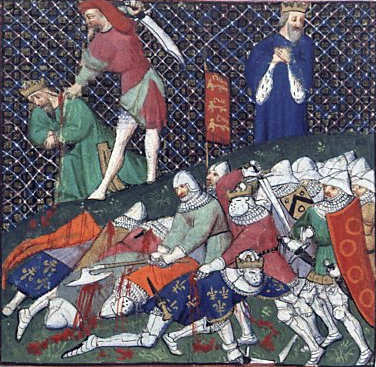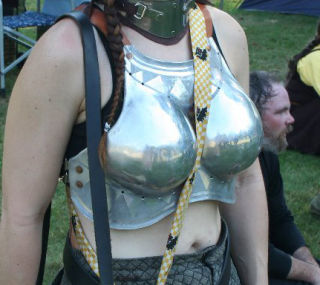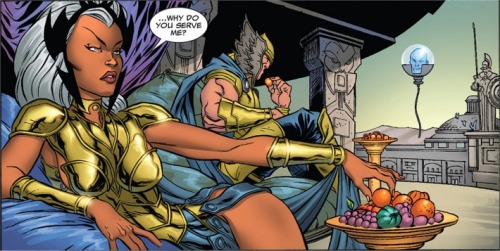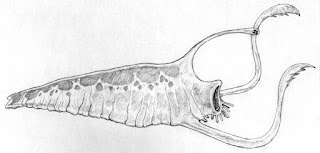A pet peeve...
One thing that's always bugged me about RPGs - especially those with a fantasy setting - is that they can tend to be chock full o' clichés. Not so much in how they read as a system or a world as such, but how they present themselves to potential players (and everybody else, for that matter). I noticed this as a new player back in the 80s, and it still seems to be a thorn in my side today. It doesn't seem to be as much of a 'problem' for, say, sci-fi or horror RPGs. Okay, this may be more about artwork than anything else, but art can sometimes be it's own strong theme within any given RPG. We can't deny that it's used in RPGs as a way to help frame the overall vibe of the game - but it seems that some clichés just won't go away. So let's consider a few of them...
Women
Let's face it, women are usually portrayed pretty bloody poorly in a lot of fantasy RPG art. This isn't just the case in '70s era D&D, where the social mores of the time were a little... different (not that that excuses it). It's still the case nowadays. WotC and Paizo are both guilty of this with D&D and Pathfinder. Much as they may try and wriggle out of it (i.e. see this
interesting post over at the excellent Gaming As Women blog), they still tend to churn out the same old crap. Or variations on it. It's not exactly original nor is it something that sends out any sort of positive signals. Do I blame the artists? Well, yes and no. Maybe they just like to draw scantily-clad women. Or maybe their art directors say they should draw them that way. Either way, it's lazy.
The interesting thing is that the game world of D&D etc doesn't really mention anything about the role that women have in them. Okay, maybe these can be inferred in some way, but that's perhaps down to who's playing the game. Things seem to be inherently less polarised than real-world modern societies. But the way RPG art handles things tends to ignore this and instead plumps for tried and tested fantasy portrayals. To my mind this actually makes things less interesting. It seems that such portrayals have missed the plot.
Equipment
What do I mean by equipment? Well, I mean clothing, weapons, armour and general kit. There seems to be a tendency in modern versions of fantasy RPGs - and, again, D&D and Pathfinder being obvious examples - to seem to want to go down the World of Warcraft/Japanese digital RPGs route. That is, equipment is portrayed in a rather silly way, and some bits tend to get ignored completely. So the overall picture of any given character type focuses on certain things at the expense of others.
Let's take armour and weapons, for instance. Originally, D&D took it's influences for such things from the Medieval period, and with good reason. The way armour and weapons evolved up to and throughout that period fits the setting well, whilst at the same time suggests a plethora of styles and designs. However, this tends to get ignored. Your average depiction of a fighter-class person tends to owe more influences to Frank Frazetta than anything else. Or, as I mentioned above, World of Warcraft in mordern versions of some fantasy RPGs. Thus we see depictions of madly impractical armour and weapons - huge swords and double-headed axes, armour that you can probably only stand up in because of the spikes, huge curved sections, etc. Again, who's to blame? Well, I'd say artists. It seems that people haven't done some actual - even basic - research. Perhaps all that actual history just isn't enough. This is a real shame because if they stopped looking at how other lazy artists have done the same thing (a copy of a copy of a copy...), they'd see that armour and weapons from history can be interestingly eccentric. To give one example: many moons ago I created some artwork for the
'Ultima Thule' sourcebook for Ars Magica. I dug into my research and looked at how Viking and Scandinavian clothing, weapons, etc should look. This fed directly into my illustrations. All of that was then undone by the cover artwork, which decided instead to resort to clichés. The Viking even has a horned helmet. Oh well. Anyway - have a look at
this page on medieval weapons and armour. Lots of odd designs there, but all evolved to be that way from practical use. This doesn't have to mean that it's boring. Similarly, if we have a look at the historical artwork of an artist like
Angus McBride we can see that there's a variety of interesting shapes, designs and colours.
As for other bits of kit, things tend to get worse. Practicality is out the window. If a woman is wearing anything, it tends to be scanty in some way. If it's a magic user or magical character class, they wear some sort of elaborate cassock - unless they're a female magic user, in which case they wear something scanty but long-flowing (i.e. see the Pathfinder core rulebook cover). You rarely see 'in-action' scenes with the characters lugging about the stuff we all know they should have: rope, baggage, lighting, bedding rolls, etc. No-one seems to be wearing anything that would help you in a cold, dirty, inhospitable dungeon environment. Why can't someone depict a magic user in a more practical garb? A cassock-like thing doesn't seem all that sensible to me. Imagine the draughts, for starters.
To sum up (for now)...
Okay, this may seem like a bit of a rant. Perhaps I'm taking things too literally. But why should the depictions in fantasy RPGs be doomed to stick to clichés? It seems a bit half-arsed. Things don't seem to have changed all that much since the '80s. It's all a little too staid and predictable. Whilst I'm not saying that fantasy RPGs have to take their influences from medieval stuff, it might actually help drive things along more original paths. Failing that, is it perhaps too much to ask that something more imaginative gets added to the mix?
That's it for now - until I can write about some other stuff along similar lines. Please feel free to pick holes, disagree, etc...































